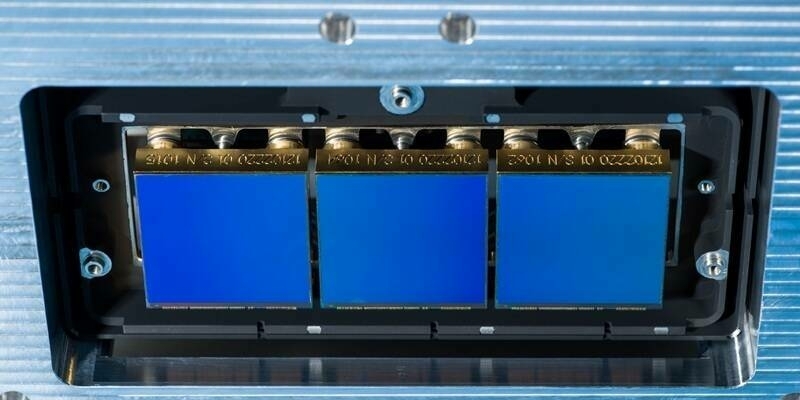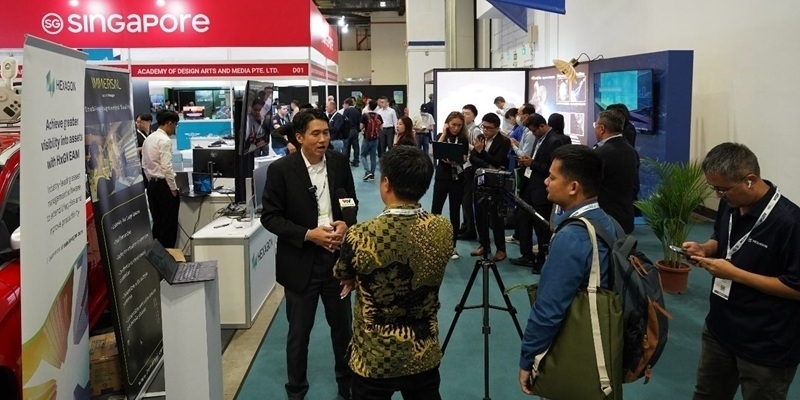Friedrichshafen, 26/09/2017 - JUICE, the Europe Space Agency´s deep space mission to the icy moons of Jupiter led by Airbus, has taken off for the first time with the testing of the RIME instrument (RIME - Radar for Icy Moon Exploration) flying beneath a helicopter.
At an airfield 30 kilometres northwest of Airbus’ Friedrichshafen plant in Germany, the 16.6 metre antenna of the RIME instrument was tested in various flight configurations during a two day campaign. In June 2022, the 5.5 ton spacecraft JUICE (JUpiter ICy moons Explorer) will set off on its nearly 600 million-kilometre-long journey to Jupiter, where it is expected to arrive in late 2029.
For three and a half years, JUICE will sweep around the giant planet, exploring its turbulent atmosphere, enormous magnetosphere, and tenuous set of dark rings, as well as studying its three largest icy moons - Europa, Ganymede and Callisto. The goal is to investigate whether there are liquid oceans under these icy crusts which might harbour potentially habitable environments.
Once the spacecraft enters Jupiter’s gravitational field, the first two and a half years will be spent making about 30 observation overflights of the three moons, examining their interior, surface, tenuous atmosphere and magnetic interactions. The last year will be spent in orbit around Ganymede to observe this moon in much greater detail.
The spacecraft will carry 10 state-of-the-art instruments, including cameras, spectrometers, an ice-penetrating radar, an altimeter, radio-science experiment, and sensors to monitor the magnetic fields and charged particles in the Jovian system.
RIME, the radar sounder instrument, is optimized for penetrating below the Galilean icy moons’ surfaces, up to a depth of 9 km. It will provide images with a resolution of around 1 km x 10 km and 50 m in depth. RIME will work at a central frequency of 9 MHz and will use a 16.6 m dipole antenna. The two antenna booms with a diameter of 4 cm are made of CFRP (Carbon fiber reinforced polymer) and have a mass of about 1300 g.
The nadir, or downward looking radar transmits radio waves which travel through the subsurface where they interact with any layers and structures with different dielectric constants. The varying reflections are detected onboard via the same antenna and used to create a depth image (radargram) of the subsurface. RIME is unique as it is the first instrument to be deployed to Jupiter and the outer Solar System capable of performing direct subsurface measurements.
The RIME tests enabled Airbus engineers to verify the results of computer simulations, and measure the radio performance of the RIME antenna as if it was mounted on a spacecraft. These characteristics are strongly impacted by the electromagnetic coupling to spacecraft surfaces and have to be measured to ensure calibration of the antenna.
Due to the required frequency range such tests have to be performed outdoors and are constrained by external disturbances, electromagnetic reflections and the general weather conditions. As the real spacecraft cannot be taken outside, a specific mock-up measuring 3 m x 2 m x 2 m has been built on which the antenna is mounted. To minimise any external coupling the antenna can be rotated vertically. The mock-up was flown hanging on a polyethylene rope roughly 120 m below a helicopter and 320 m above the ground. All test equipment was integrated in the mock-up and operated via remote control from the ground.
To withstand the helicopter tests, and to protect against possible wind loads the fragile, space designed, antenna booms were "stiffened" for the test flights with fiberglass (GFRP) tubes.
Airbus is prime contractor for the JUICE spacecraft, building on the expertise developed on its sites in Toulouse (France), Friedrichshafen (Germany), Stevenage (UK) and Madrid (Spain). Airbus has around 150 space engineers on JUICE and leads an industry consortium of more than 60 companies.
Juice Photo link :
http://www.airbus.com/newsroom/search.image.html?q=&tags=products-and-solutions:space/space-exploration,products-and-solutions:space&lang=en
Juice video link:
http://www.airbus.com/newsroom/search.video.html?q=&tags=products-and-solutions:space/space-exploration,products-and-solutions:space&lang=en#media-video-video-all-1
Subscribe to our newsletter
Stay updated on the latest technology, innovation product arrivals and exciting offers to your inbox.
Newsletter

